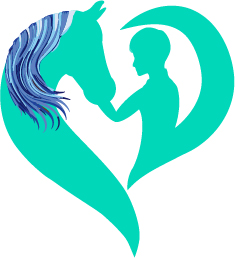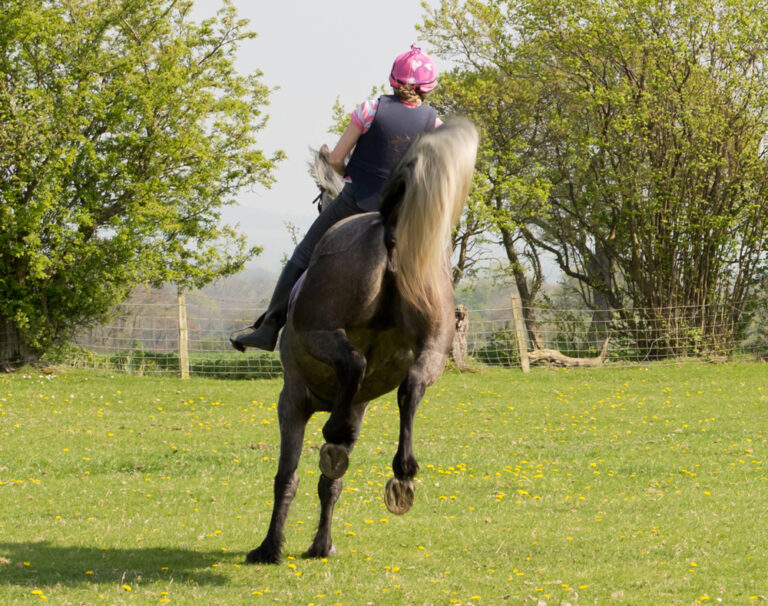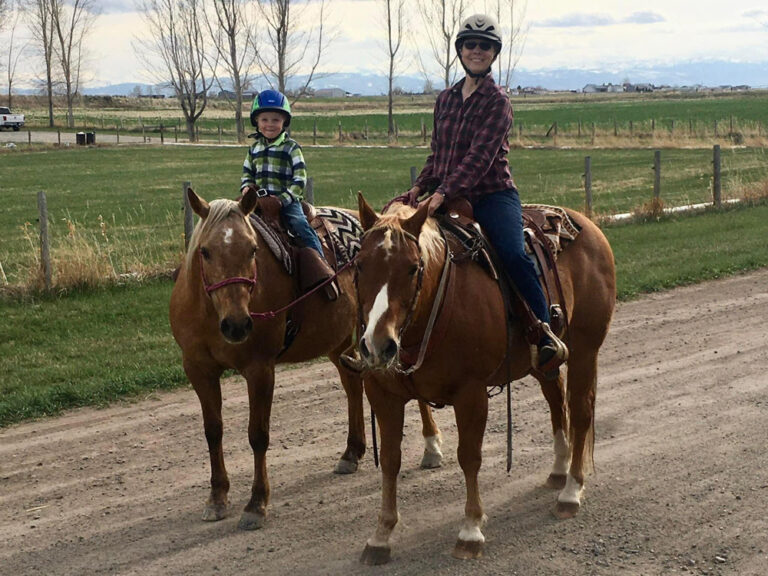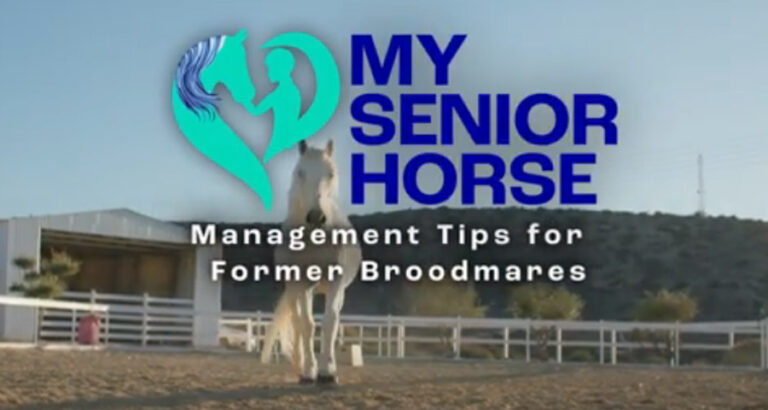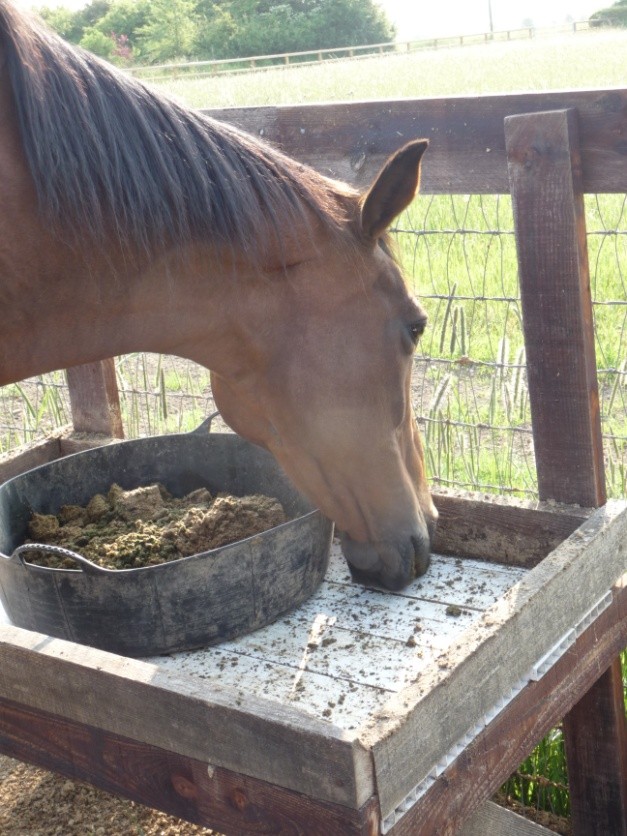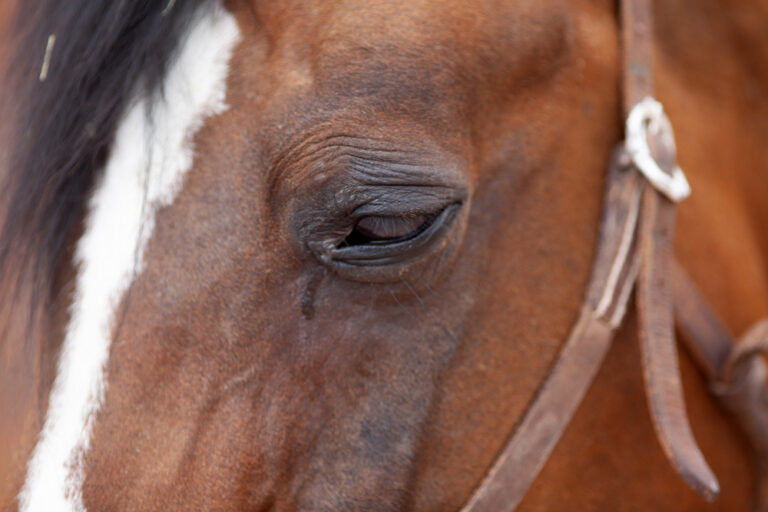Dr. Rachel Doenges of Rood & Riddle Equine Hospital in Kentucky offers helpful tips on managing horses that formerly were broodmares.
(Editor’s note: The content of this video is the expert’s approach to the topic. Please consult with your practitioner if you have questions.)
Intact Broodmares
“Any mare that is intact—still has her reproductive tract—may have issues you have to screen for or watch out for,” said Doenges. “The biggest thing we get calls about is vaginal discharge or vulvar discharge.
“It’s important to note that vulvar discharge in mares is never normal,” she stressed. “We also get calls [from owners] because they think the mares are in heat because they see blood at the vulva. That is also not normal in a mare.”
Doenges said if you see vulvar discharge in a former broodmare it could be a uterine infection or vaginitis. She said it also might be mucometra or pyrometra. (Editor’s note: Mucometra is characterized by an accumulation of non-inflammatory liquid inside the uterine lumen. Pyrometra comes from a uterine infection characterized by the accumulation of pus within the uterus. This is often due to a blocked or damaged cervix.)
Doenges said even mares that have done well throughout their lives can have issues as they become older “because their conformation changes.
“As they lose muscle mass or maybe even some weight, the reproductive tract tends to tip forward into the body cavity. So, they are more likely to contaminate their uterus,” she said. “They are also more likely to urine pool.” (Editor’s note: Urine pooling can occur if urine doesn’t exit the body properly and can pool in the vagina, sometimes flowing into the uterus. The latter can happen when the cervix is relaxed during estrus.)
She added that, “The long and the short of it is, if you are seeing any vulvar discharge, it’s an indication to get your vet out and get your broodmare looked at.”
Vulvar Conformation
Doenges said the other thing that owners of former broodmares might think about is vulvar conformation. She said sometimes mares will need the top part of the vulva stitched up to prevent contamination from feces or urine. This is called a Caslick’s procedure.
“This can change as the anatomy tips forward [with age, as was previously mentioned],” said Doenges. “You can have mares that have never had a Caslick’s in their life need one when they get a little bit older.
“Not having a Caslick’s [if needed] can lead to wind sucking,” said Doenges. “This is when air is going into the vulva, which can be very irritating. A lot of people notice this when they are riding. The mare gets a little more agitated. That’s an easy fix!”
The other part of the anatomy that tends to tip forward with age and cause problems is when the urethra goes a little over the brim of the pelvis, she said. That can cause urine pooling. “As you can imagine, any urine in the vagina can be very irritating,” Doenges noted.
“If it is severe, we have to do more advanced procedures for this,” she added. “It might require a surgery called a urethral extension.”
Tumors in Broodmares
Doenges said in any aging animal comes the risk of neoplasia (tumors). “Fortunately in the mare, reproductive tumors are not that common,” she said. “But, the two major ones we think of are granulosa theca cell tumor of the ovary and myelyoma of the uterus.”
She said a granulosa theca cell tumor is also known as a GCT. It is a mass in the ovaries that does produce hormones. “So a lot of times we see signs in behavior,” said Donges. “One of the most well-known signs of GCT is stallion-like behavior. The reason for that is the masses can sometimes produce testosterone. But that is only a sign about 50% of the time.
“If your mare is exhibiting stallion-like behavior, that is something to get checked out. That is not normal,” she stressed. “But, they can have one of these tumors without exhibiting stallion-like behavior.”
She said the most common sign of GCT is irregular heat cycles. “This is something we notice fairly quickly if we are tracking a mare’s cycle for breeding. But, you might notice it because they seem like they are in heat all the time.”
She said usually the signs can be cured with removal of the ovary. “In fact, even in the breeding animals, we can remove an ovary and they can reproduce and do well,” Doenges added.
The myelyoma is the most common mass in the broodmare’s uterus, Doenges said. “These are generally benign, so they don’t spread,” she said. “Rarely they can be malignant and spread to other body parts.
“The big thing about these is that they are space-occupying tumors of the uterus,” explained Doenges. “They can form a barrier for fluid clearance [from the uterus] or a nidus [breeding ground] for infection. They can bleed, sometimes.”
Doenges said affected broodmares will have discharge. “And if you see discharge, it’s time to get it checked,” she stressed.
Heat and Behavior
A lot of people associate objectionable behaviors with heat, said Doenges. “Any time you see behaviors you think are associated with heat, we need to determine if they are happening when the mare is in heat. That would take a vet doing a reproductive exam and verifying they are in heat when you are seeing the behaviors.
“Unfortunately, a lot of these mares that we think are having bad behaviors secondary to heat are having bad behaviors secondary to pain,” said Doenges. “The recommendation is having a full lameness exam. And some vets will do a trial with pain meds to see if it resolves the behavior.”
Another thing that happens that some people associate with heat is vaginitis, which is often secondary to wind sucking. “It’s another good reason to have your vet assess your broodmare’s vulvar conformation,” she said. “A little bit of wind sucking can be very irritating for the mare.”
Further Content
- Second Careers for Broodmares Video. Dr. Rachel Doenges. MySeniorHorse.com
- Health Concerns in Older Geldings Video. Dr. Rachel Doenges. MySeniorHorse.com
- Breeding Maiden Senior Mares Video. Dr. Karen Wolfsdorf. MySeniorHorse.com
- Mare Reproductive System Diagram. MySeniorHorse.com
- Older Mares: Oils and Nutrients Can Help Oocyte Metabolism. Kimberly S. Brown. MySeniorHorse.com
-
Editors of My Senior Horse are journalism professionals, most of whom are lifelong horse owners.View all posts


